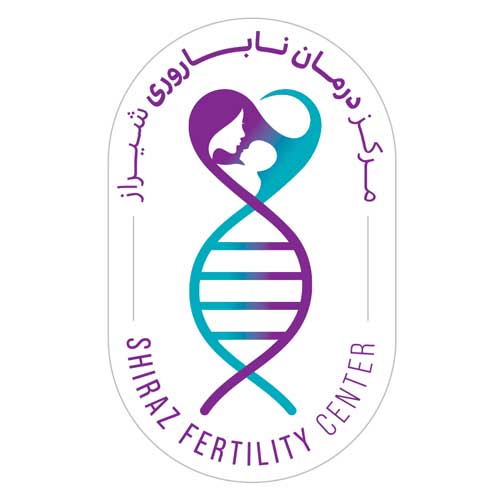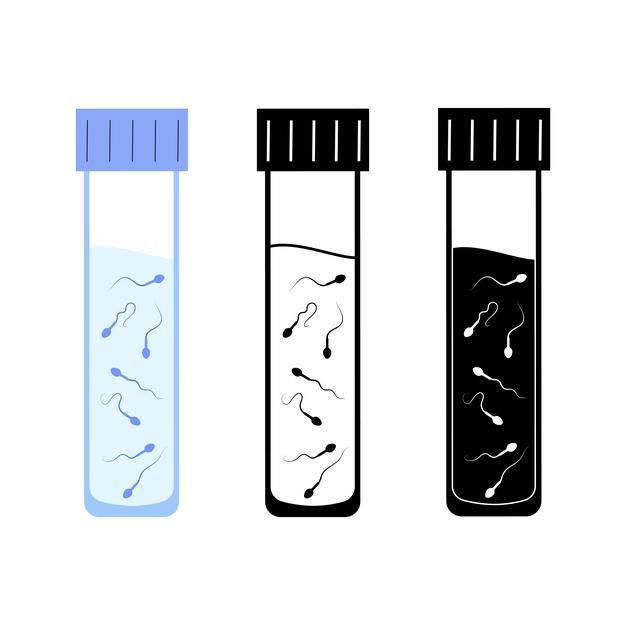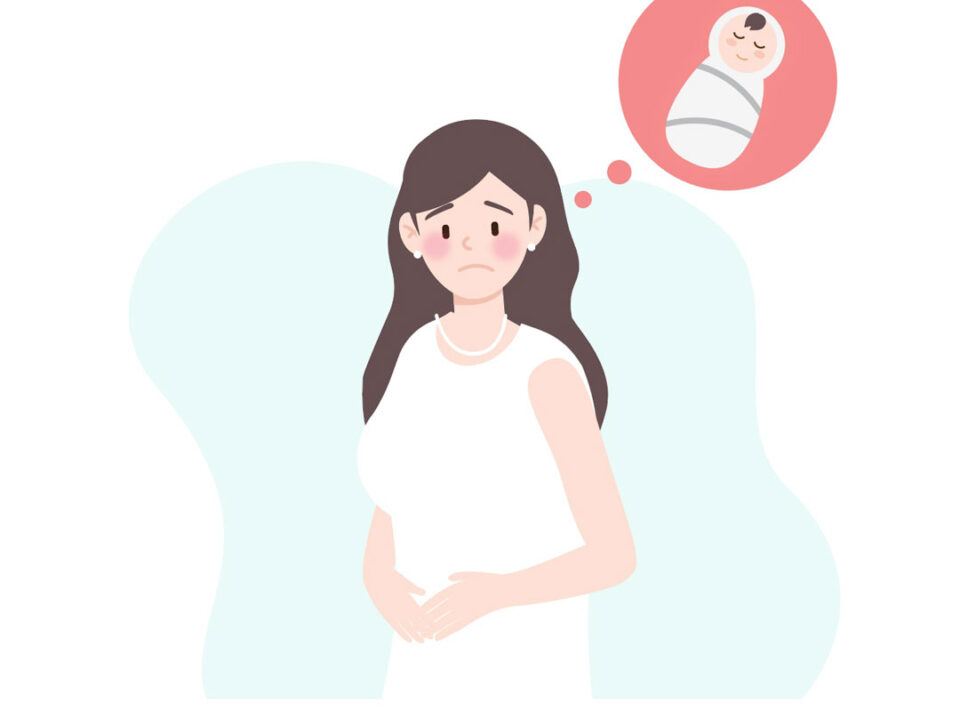
Indications for PGD

Blastomere biopsy
Male infertility immunology
Testicular immunity
When spermatogenesis begins during puberty and new antigens appear on meiotic cells, a challenge is created for the body that must be addressed. Protection of germ cells from immune system attacks occurs through “testicular immunity” due to the presence of the blood-testis barrier and the lack of immune responses to antigens.
Studies show that the testes are not completely isolated from the immune system, but rather, immune responses in this area are balanced, allowing the immune system to still protect the gonads from pathogens. It appears that the control mechanisms of testicular immunity involve factors that also regulate spermatogenesis.
Male infertility immunology

1-Role of the blood-testis barrier and Sertoli cells
The blood-testis barrier is formed by tight junctions between adjacent Sertoli cells and pore proteins, dividing the seminiferous tubule epithelium into basal and adluminal compartments. Spermatogonia and preleptotene spermatocytes are present in the basal compartment, while other spermatocytes after the preleptotene stage, spermatids, and spermatozoa are located in the adluminal compartment. The primary purpose of this barrier is to protect germ cells from immune responses and prevent autoimmune attacks.
It is now well accepted that the blood-testis barrier is not the sole factor in testicular immunity, as spermatocytes in the basal compartment of the seminiferous tubule express new antigens. Additionally, this barrier is incomplete in the rete testis. Therefore, mechanisms other than the physical separation caused by the blood-testis barrier are involved in testicular immunity. Sertoli cells, in addition to participating in the formation of the blood-testis barrier, play a role in inhibiting immune responses and maintaining testicular immunity by producing immune-suppressive molecules. Furthermore, Sertoli cells continuously produce and secrete anti-inflammatory cytokines such as TGF-beta and activin.
2-Role of macrophages
In addition to their role in innate immune responses, macrophages are essential for maintaining tissue homeostasis. Macrophages are normally found in the interstitial spaces of the testis and never within the seminiferous epithelium. Testicular macrophages secrete low levels of inflammatory cytokines in response to inflammatory stimuli. They also express lower levels of the Toll-like receptor gene family and inhibit the NF-κB inflammatory signaling pathway. Through these mechanisms, they contribute to testicular immunity. Studies on experimental animals have shown that anti-inflammatory macrophages are more abundant than pro-inflammatory macrophages in the testis, and anti-inflammatory macrophages play a more prominent role in the immune system.
3-Role of dendritic cells
The number of these cells in testicular tissue is very low but increases significantly during inflammation. Immature dendritic cells have a high capacity for antigen uptake and low activity for stimulating T cells, while mature cells have low endocytic activity and are potent stimulators of T cells. According to studies, dendritic cells in testicular tissue are mostly found with an immature and tolerogenic phenotype, but during testicular inflammation, these cells mature and migrate to lymph nodes after capturing antigens, stimulating T cells, and initiating immune responses.
4-Role of T cells
The lymphocyte population among testicular leukocytes is 10-20%, typically consisting of CD8+ T cells, CD4+ T cells, and regulatory T cells (Tregs). Immune-suppressive factors such as TGF-beta, IL-10, and Activin A, which are produced locally in testicular tissue, induce inhibitory responses in T lymphocytes, resulting in prolonged tolerance. Studies have shown that testosterone promotes the expansion of Tregs, and Sertoli cell secretory factors like TGF-beta induce Treg differentiation.
5-Role of hormones
Laboratory and clinical studies have shown that androgens, in addition to their anabolic and spermatogenic roles, also play a role in downregulating inflammatory responses. Treatment of various immune and non-immune cells with testosterone inhibits the production of inflammatory cytokines and increases the production of anti-inflammatory cytokines. Testosterone also decreases Fas-mediated apoptosis. In general, testosterone exerts its role in inhibiting the immune system in the testis by stimulating Treg differentiation and regulating the balance of pro- and anti-inflammatory cytokine production in Sertoli, Leydig, and interstitial cells.
Formation of anti-sperm antibodies in men
Anti-sperm antibodies (ASA) consist of various types of antibodies, mostly of the IgA and IgG classes. These antibodies can be found in the serum and semen of men, genital tract secretions, and follicular fluid. Men with ASA in their semen usually also have these antibodies in their serum. Possible causes of anti-sperm antibody production in men include obstruction of the genital tract, infectious and inflammatory diseases of the testes, varicocele, testicular tumors, and testicular surgery.
1-Obstruction of the genital tract
Epididymal and vas deferens surgeries to block their pathways are the only confirmed conditions for the development of high levels of ASA. 50-100% of men who undergo vasectomy develop secondary ASA in their serum and semen. In addition to these conditions, ASA can be detected in patients with congenital bilateral absence of the vas deferens and cystic fibrosis after puberty. The formation of ASA in conditions of genital tract obstruction can be due to increased intraductal pressure, absorption of sperm and sperm fragments by the lining tissue along the pathway, and a decrease in regulatory factors present in the plasma.
2-Infection and inflammation of the genital tract
Although the relationship between genital tract infection and inflammation and the development of ASA is controversial, mechanisms have been proposed for this. Closure of the genital tract due to inflammatory changes, rupture of the blood-testis barrier due to local inflammation, a decrease in immune regulatory factors, and antigenic similarities between microorganisms responsible for genital tract infections and sperm surface antigens can be mechanisms for the formation of ASA in conditions of testicular infection and inflammation. In these conditions, the ground is prepared for the development of ASA, but clinical evidence shows that the relationship between such diseases and ASA production is weak.
3-Varicocele
Since the first reports in 1959 linking varicocele to the production of ASA, there have been varied findings. Some studies have shown higher levels of ASA in the serum of patients with varicocele, suggesting it as a causal factor. However, other studies have failed to establish such a correlation. More research is needed to definitively prove the link between varicocele and ASA production.
4-Cryptorchidism
Undescended testes, occurring in 1.4-2.7% of male newborns, are more common in premature births. Several reports have indicated an increased incidence of ASA among individuals with a history of cryptorchidism, while others have not observed a connection between this condition and the presence of ASA. In prepubertal boys with a history of cryptorchidism, clinical evidence shows that ASA can be found in the serum despite the absence of sperm formation.
In this regard, some have suggested that sperm antigens might be expressed even before meiosis or that the blood-testis barrier could be compromised by heat. However, studies on laboratory mice have demonstrated that the blood-testis barrier remains intact and unaffected by heat. As observed, the relationship between cryptorchidism and the development of ASA remains a subject of debate among researchers.
5-Testicular trauma, surgery, and tumors
Any condition that causes a breach in the blood-testis barrier can be a clear factor for the production of anti-sperm antibodies (ASA) because in such a situation, the immune system will come into contact with sperm surface antigens. However, in one report, only one out of eight patients who had experienced testicular trauma had measurable levels of ASA. Surgical procedures on the testes or surrounding structures (such as hernia repair), testicular biopsy, and sperm extraction from the testes are not considered clear factors for the development of ASA. Further studies are needed to investigate the relationship between these factors and ASA development, as well as the pathophysiology of ASA formation. There is also no consensus regarding tumors and their role in ASA development.
6-Male homosexuality
In 1980, laboratory studies on rabbits demonstrated that the discharge of sperm into the rectum could lead to the production of anti-sperm antibodies (ASA). In humans, some studies have shown higher titers of ASA in homosexual men, while other studies have found no significant difference in ASA production between homosexual men and a control group. Based on the available clinical and laboratory evidence, the link between homosexuality and ASA production is not clear-cut. However, if such a connection exists, the gastrointestinal mucosa is likely the site of antibody production.
To date, the exact pathophysiology of anti-sperm antibody (ASA) development in men remains unclear. The belief that a simple rupture or leak in the blood-testis barrier is sufficient to initiate the production of antibodies against sperm has been challenged by clinical evidence. The only confirmed mechanism for the formation of these antibodies is the obstruction of the genital tract, particularly vasectomy. The most likely site for ASA formation in this case is the epididymis, where they begin to be produced locally and systemically, subsequently spreading to other areas of the genital tract.
Anti-sperm antibodies in women
In women, anti-sperm antibodies can be found in the serum, cervical mucus, and follicular fluid. The concentration of immunoglobulins in cervical mucus varies with hormonal changes during the menstrual cycle, pregnancy, and inflammation, and is not directly related to the amount of antibody in the serum. In follicular fluid, the level of immunoglobulins is either the same as or lower than that in the serum. Laboratory studies have shown that semen contains immune-suppressing factors, and inhibitory epitopes on the sperm surface can suppress the B cell response. Healthy fertile women typically do not exhibit a strong immune response to sperm; however, there are women who have high levels of anti-sperm antibodies.
Observations have shown that women with anti-sperm antibodies (ASA) often have partners who also have ASA. Other studies report that a third of women with ASA react only to the sperm antigens of their partner, not to general sperm antigens. The first hypothesis for the development of ASA in women is based on observations showing that human sperm antigens have similarities with microbial antigens. The presence of these microbes can lead to the production of antibodies that, through a cross-reaction mechanism, also react against sperm.
The second hypothesis posits that sperm coated with antibodies can stimulate the release of interferon-gamma from lymphocytes. Interferon-gamma activates macrophages, which, upon presenting sperm antigens, stimulate helper T cells and B cells, subsequently leading to the production of ASA in the female reproductive tract. A more recent hypothesis suggests that after repeated sexual intercourse with a man who has ASA, anti-idiotype antibodies are produced in the woman’s body, facilitating immune responses against sperm.
Tests for identifying anti-sperm antibodies
Various methods have been employed to identify anti-sperm antibodies, but the clinical results can be debated due to interfering factors during the testing process. Factors such as the type of antibody identification test, the method of semen washing, the time interval between ejaculation and testing, and the standards for interpreting results can influence the outcomes of these methods.
1.Agglutination and sperm immobilization methods
In the gelatin agglutination test (GAT), the patient’s serum is collected, its complement system is inactivated, and then it is mixed with a donor’s semen lacking ASA in a gelatin solution. Sperm agglutination in the gelatin solution is reported as a positive result. In a similar test, the sperm-mixing agglutination test (TSAT), sperm from a donor is mixed with the patient’s serum in a small drop, and agglutination is evaluated under a microscope. The sperm immobilization test (SIT) is similar to the TSAT method, except that a small amount of rabbit or guinea pig serum is added as a complement before the sample is evaluated. A positive result is reported when more than half of the sperm are immobile. Due to their drawbacks, these methods are not recommended for routine clinical testing.
2.Cervical mucus tests
The presence of ASA in cervical mucus can be assessed using in vivo and in vitro methods. In the post-coital test (PCT), a sample of cervical mucus is collected 9-14 hours after intercourse and evaluated for sperm motility. If anti-sperm antibodies are present in the cervical mucus, sperm motility will be predominantly vibratory, and progressive movement will decrease. Both IgA and IgG immunoglobulins can be found in cervical mucus. In laboratory testing, the sperm-cervical mucus contact test (SCMC) is used. In this test, a sample of cervical mucus is taken and mixed with a sperm sample, and the pattern of sperm motility is evaluated for vibratory movement.
3. Utilization of ELISA and immunofluorescence methods.
The ELISA technique can be used quantitatively to detect the presence of ASA in a sample. In this method, human anti-immunoglobulins conjugated with enzymes that can break down a chromogenic substrate and produce a color reaction are used. Therefore, by examining the amount of color produced, the concentration of the antibody in the sample can be determined. In flow cytometry, samples are stained with immunofluorescence to detect the presence of antibodies, and the number of stained sperm is measured using a flow cytometer. Both of these methods are not widely used due to their complexity, high cost, and the need for specialized equipment.
4.test MAR
In this simple and basic method, a semen sample or a suspension of red blood cells coated with human immunoglobulins is combined with rabbit anti-immunoglobulin antiserum and evaluated for the formation of sperm-red blood cell aggregates. Today, in commercial products, latex beads coated with IgG or IgA immunoglobulins are used instead of red blood cells. Motile sperm attach to these beads, causing agglutination, and in these aggregates, the sperm exhibit wave-like movements. In this method, unwashed semen samples are used.
“A test result is reported as positive when more than half of the motile sperm bind to the latex beads. Although MAR is a simple and ideal method for identifying ASA on sperm, it has limitations. This test cannot be performed on oligo-, astheno-, or azoospermic samples.
5.test IBT
This method is also a relatively simple and inexpensive way to identify surface sperm ASAs, and unlike the MAR test, it does not require expensive equipment. The beads used in this method are polyacrylamide beads that are covalently linked to rabbit immunoglobulins against human antibodies. This method allows for the determination of the antibody type, the binding site of the antibodies, and the percentage of sperm covered with antibodies. In this method, the semen sample is washed and the sperm are separated from the seminal plasma. Then, the sperm are mixed with beads coated with anti-human immunoglobulin antibodies. After a period of time, the number of sperm attached to the beads is counted. Results are reported as positive when more than half of the motile sperm are associated with one or more beads.
This method can be used indirectly to identify ASA in biological fluids such as semen plasma, serum, or cervical mucus. In this method, a sperm sample from a donor and the fluid in question (e.g., patient’s serum) are combined, and then the IBT test is performed and evaluated. Among the mentioned methods, only the MAR and IBT tests are recommended by the WHO guidelines, and these two methods are widely used in andrology laboratories for the evaluation of infertility in couples.
Infertility and anti-sperm antibodies
The first studies linking ASA and infertility were conducted and reported in 1954, suggesting that ASA could be a cause of infertility. Although the clinical effects of ASA have been extensively studied since then, they remain controversial. The results of studies on the prevalence of ASA in infertile couples have varied due to factors such as the differing specificity and sensitivity of ASA detection tests and the screening of the study population. Nevertheless, ASA is considered a potential factor for infertility, and various mechanisms have been proposed for it.
The only consistently observed change in semen in the presence of ASA is the formation of agglutination, a time-dependent phenomenon that causes sperm to clump together, reducing their motility. The first documented mechanism by which ASA interferes with fertility is by impairing sperm penetration through cervical mucus. Both ASAs on the sperm surface and those present in the cervical mucus are involved, reducing sperm penetration into the uterine cavity. The extent of this interference depends on the concentration of the antibodies. Antibodies directed against the ROS of the sperm tail do not play a role in disrupting sperm-cervical mucus interaction and do not affect fertility.
ASA can also interfere with the process of sperm capacitation and the acrosome reaction. Antibodies can coat surface molecules involved in binding to the zona pellucida or the acrosomal membrane, thus disrupting the fertilization process. The disruption of sperm-egg interactions by ASA depends on the binding site of the antibody on the sperm surface and the type of antigens covered by the antibodies. Some studies have also reported that ASA can interfere with the early stages of embryo development and implantation. Although there is sufficient evidence to support the effects of ASA on infertility, the prevalence and specific mechanisms are not fully understood. In general, high levels of ASA can affect the initial processes of reproduction such as sperm migration, fertilization, and the early stages of embryo development. Today, reliable tests are available to identify these antibodies, which can be helpful in diagnosing the causes of infertility in couples.
Therapeutic approaches for infertility caused by ASA
Treatment strategies can be categorized into three groups. The first group involves treatments that suppress the immune system. The second group utilizes assisted reproductive technologies, and the third group encompasses laboratory methods to remove antibodies. The most common treatment for immune suppression is the use of corticosteroids. Although studies have been conducted on the effects of these treatments on infertile couples and pregnancy rates, the lack of placebo control groups, varying dosages, different drug types, and diverse techniques make it difficult to compare and draw conclusions about the use of these drugs in the treatment of immunological infertility. Additionally, the use of these drugs must be considered in light of their potential side effects.
Assisted reproductive technologies can bypass potential barriers created by ASAs that hinder sperm from reaching the egg and fertilization, making them useful in treating infertility in these individuals. GIFT, IVF, IUI, and ICSI can be used depending on the specific circumstances. Couples can benefit from IUI if their issue lies in sperm penetration through the cervical mucus. IUI can be the first choice of treatment as it can increase the number of ASA-free sperm through washing or laboratory techniques and also resolve the issue of sperm passing through the cervical mucus. However, this method does not address the potential presence of antibodies in uterine secretions and fallopian tubes.
The next choice is between IVF and ICSI cycles. Although there are studies showing reduced fertilization rates, pregnancy rates, and increased miscarriage rates in infertile couples with ASA undergoing IVF cycles, a meta-analysis in 2011 reported that ASA in semen does not affect pregnancy rates after IVF and ICSI cycles. Both methods remain acceptable treatments for couples with ASA. Several laboratory methods have also been proposed to overcome ASA, which are essentially treatments on sperm populations to polish or prevent antibody binding or to separate sperm that do not have ASA.
Rapid dilution and washing of sperm after ejaculation, or collecting the initial portion of the ejaculate that is rich in sperm, can reduce the binding of antibodies secreted from the prostate and seminal vesicles. The use of Petri dishes coated with human anti-immunoglobulins can also increase the concentration of sperm without ASA. Treating the semen sample with immunologic beads can also reduce the number of antibodies attached to sperm, or washing sperm in columns of dextran beads can also increase the number of sperm without ASA.
Adding 50% serum to the specimen collection container and performing a rapid wash can increase the concentration of sperm without ASA. Immunomagnetic separation has also been used to isolate sperm without ASA. In this method, sperm carrying antibodies bind to magnetic particles and are separated in a magnetic field. However, this method has not gained widespread clinical acceptance. Other methods such as laboratory capacitation using albumin or the use of proteases to break down antibodies have also been suggested. Overall, none of these methods have been proposed as an ideal clinical method.
Source: Clinical Approaches to Infertility in Reproductive Biology
Also read:



